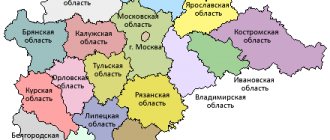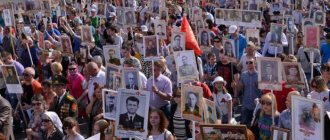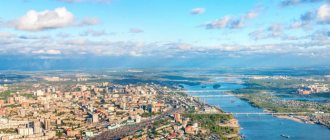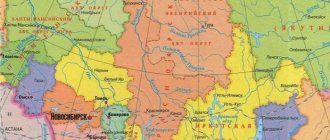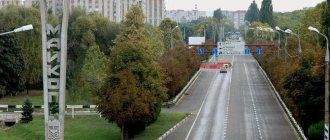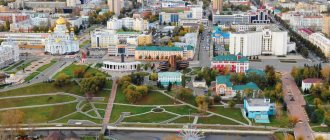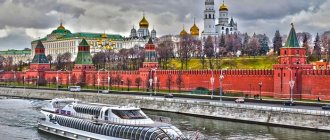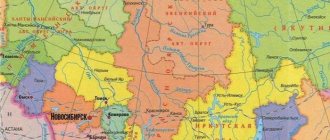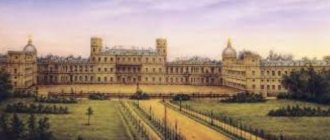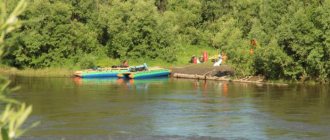Features of the geographical location of the southern part of Russia
The borders of the southern territory of our state are the waters of the Black and Caspian seas.
The South in our state includes the territories of the North Caucasus and Southern Federal Districts. They are characterized by the densest population density among others in our state. The southern territories of the state are conventionally divided into mountainous and flat. They are distinguished by their seaside location. From the eastern direction, they are washed by the Caspian Sea, from the western direction, they are washed by the Azov and Black Seas.
The state border passes through the southern territory of our state. Our neighbors from the south of the Russian state are: Ukraine, as well as Azerbaijan, Georgia and Abkhazia. The lowland south is characterized by highly developed transport lines. There are no railways in the mountainous south; they are laid only along the sea coast. The railway line runs through Sochi, Sukhumi and Derbent.
Population and indigenous people of the South of Russia
Over 25 million people inhabit the southern part of our state. This amounts to almost 18% of all Russians. The southern territory is considered very populous, ranking first in the number of ethnic groups and nations.
The south of Russia does not have uniformity of settlement. The population reaches the largest numbers in industrial regions and on lands with developed crop production: in the Crimea and in the Krasnodar Territory, Rostov Region. In the North Caucasus, Russian nationality is not considered predominant.
For example, in Dagestan, Russian nationality is only in eighth place. On the lands of the Southern District, Russian nationality predominates over other nationalities. Krasnodar lands are the most densely populated. They are home to about 6 million people. On the Crimean Peninsula, Tatars are the indigenous population. Bakhchisarai is their main residence.
The Russian South has a diverse national composition. It unites several dozen nations, peoples and ethnic groups. The percentage of Russian residents of the South varies in different areas, but is considered predominant. Some of the most numerous nationalities of the South are: Chechen, Ossetian, Armenian, Ukrainian, Tatar, Ingush.
Novoshakhtinsky case
Meanwhile, government programs aimed at improving the living conditions of city residents are a “coin” with two sides. An illustration of this can be the already mentioned Novoshakhtinsk (Rostov region). After 1995, with the liquidation of coal enterprises, which were the only sector of the economy, the city of mining glory underwent serious transformations. The sharp reduction in jobs contributed to a large outflow of population in the first years after the liquidation of the mines, and, as a consequence, the vacancy of many land plots and private houses.
To support mining territories, development programs were developed at the state level, including providing citizens with social payments for residential premises damaged by mining operations in liquidated mines. These activities were developed by FBU GURSH (state institution for the restructuring of mines). Funds were allocated for two activities: the resettlement of citizens from dilapidated housing that became unsuitable as a result of mining operations at abandoned mines, and the demolition of dilapidated housing. Since 1995, the activities have been implemented by the mines, and after the liquidation of the mines, since 2002 they have been transferred to the administration of the city of Novoshakhtinsk.
Since 2005, large-scale construction began in the city, which was carried out at more than 20 sites. But since 2013, the amount of funds under the GURSH program began to decline. Despite this, the construction of houses continues to this day, but in a more limited manner. Over the entire period of implementation of the program, over 11 thousand people were resettled, which is about 10% of the total number of city residents, and over 6 billion rubles were used.
Government programs facilitated the relocation of citizens to new homes, but did not provide the necessary funds for the demolition of real estate properties remaining after relocation. Funds for demolition activities have not been allocated for about 10 years. Some areas are being developed with new residential buildings, while in others many apartment buildings remain to be demolished. Moreover, the mechanisms for transferring ownership of real estate during the resettlement process, which were poorly developed in the GURSH program, have led to the fact that today the majority of buildings recognized as dilapidated are in private ownership, which makes it impossible for the city administration to make decisions on their demolition without first conducting lengthy legal procedures.
Currently, in the city the problems of providing residents with square meters are not acute. Moreover, in the housing construction market, the only participants in shared construction are citizens receiving social benefits or participants in other housing programs. However, the problem with the demolition of dilapidated housing remains open.
Nature of the South of Russia
The relief of the southern part of our country is dominated by hills and mountains. Steppes and mixed forest zones have become widespread. Winters are often mild and summers are hot. Suitable conditions are being created for the development of agriculture and agricultural production.
The south supplies our state with grain, fruits and melons. The nature of the Southern Federal District is dominated by steppe, mountainous and mountain landscapes. The forests of the area are mixed.
Adygea has picturesque nature: vast forests, snowy mountain peaks, endless steppes and blooming alpine meadows. Steppes predominate in the Volgograd and Rostov regions. The Black Sea coast of the Caucasus is dominated by mountain forests with rich flora. Oaks and beeches grow in this area.
To the south of Gelendzhik, magnolia and palm trees grow. The nature of Crimea changes from north to south. In the northern part, in the Kerch region, hilly steppes dominate. A variety of grain crops are grown here. To the south, the steppes give way to forest-steppes, and then turn into oak forests. Oak trees occupy more than half of the entire territory of Crimea.
The southern part of Crimea is dominated by pine forests and juniper. The relief of the North Caucasus, in the northern part, is flat, and in the southern part, it is mountainous. The Caucasus is famous for its highest peaks: Elbrus and Kazbek. The soil in the region is fertile. The Western Caucasus is dominated by mountains, forests and meadows. From the foothills of the Caucasus Mountains to the peaks, the natural area changes. The steppes give way to forests, then meadows appear, and above, among the mountains, there is snow and glaciers.
Recreation and tourism
The European South is considered one of the best places for relaxation and recreation. The entire resort industry in the region is divided into 3 main recreational categories. Among them are the following:
- Marine. It is located on the Black Sea coast and allows all vacationers to improve their health due to the mild climate and clean air.
- Mountain. These places attract tourists from Russia and other countries of the world. Here everyone can feel the grandeur of the mountains and enjoy beautiful views of nature.
- Mineral. Here, all guests are offered to relax after working days and receive treatment with water extracted from healing mineral springs.
In the mountainous and coastal areas there are resort towns of the European South, which are known far beyond the region. In these places, tourists can enjoy clean air, get acquainted with culture and folk crafts.
Best places to travel:
- Arkhyz. This mountain resort is open at any time of the year. It is located on the northern slope of the Main Caucasus Range, which is located on the territory of Karachay-Cherkessia. The remoteness of this place from large cities entails transport difficulties. However, this small drawback is completely overshadowed by the unique nature and clean air. Even families with children and the elderly will find it comfortable to relax in these places. This is due to the mild climate and the absence of sudden temperature changes. The resort has several ski slopes and equipped trails for mountain walks.
- Essentuki. This resort is located in the Stavropol Territory, near the city of Pyatigorsk. The recreation centers are located in the valley where the Bugunta River flows into Podkumok. Because of this, there are many unique plants here, many of which are listed in the Red Book of Russia. In summer it is quite hot in Essentuki, so it is better to relax in spring or autumn. The main highlight of the resort is the presence of 30 sanatoriums that offer drinking and balneological treatment.
- Kislovodsk This resort is considered one of the most popular in the region. It is located in the valley of the same name, which is surrounded on all sides by mountain ranges. There are many mineral springs here that help get rid of various diseases and improve the general condition of a person. Kislovodsk is an ideal place for nature lovers and photographers. The wide variety of flora and fauna will allow you to take many beautiful pictures. The resort is constantly developing, so you can find luxury hotels and well-kept parks on its territory.
- Mineral water. This unique city is located in the Stavropol Territory, in the valley of the Kuma River. The steppe predominates here, so plants and animals characteristic of such an area can be found. The resort attracts tourists from all over Russia, as the average daily temperature in summer is 20 degrees, and in winter - 2.5 below zero. Autumn is considered the best time to relax.
- Sochi. This resort stands out from most Black Sea cities. By the beginning of the Olympic Games, the city infrastructure here had been completely updated. Many sports facilities and luxury hotels have been built on the territory of the resort. Now Sochi has become one of the best resorts in Europe, attracting vacationers from all over the world. In these places, every tourist can find entertainment. For families with children, there are special playgrounds and beaches with the purest sand. Elderly people will also have something to do in Sochi. They will be able to stroll along the embankment, admire the sunset and spend time in a well-kept park area.
The European South is a unique historical and cultural region of Russia. People of different nationalities and religions coexist peacefully on its territory. All this makes the North Caucasus one of the most important and promising regions of the country.
Climate of the South of Russia
The climate of the South of Russia is very diverse, depending on the area. The western part of the North Caucasus District is dominated by a temperate climate, which is characterized by heavy rainfall and warm, long summers.
From the east, in the Caspian lowland, the climate is hot and arid. In summer there is drought, dry winds and dust storms are frequent. Higher in the mountains, the climate is different. The higher the rise in the mountains, the lower the temperature. The winds blow constantly.
In general, the territory of the North Caucasus has a temperate continental climate, while on the Black Sea coast a subtropical climate prevails. In winter, it can be cold in the North Caucasus and snow falls.
In summer it gets hot with frequent thunderstorms and winds. In the flat territory of the North Caucasus, the summer period lasts 5 months. The climate in the Southern Federal District is generally moderately warm. But, depending on the territory, it may differ.
Kalmykia has a harsh, temperate continental climate. Summer is dry, with dry winds. The Volgograd region has an arid, pronounced continental climate. Winters have little snow, summers are dry. Crimea is distinguished by three climatic zones: the temperate continental steppe zone, the mountainous and subtropical zone of the southern coast.
Novorossiysk is a center of labor recreation in the Russian South
A beautiful city on the shore of Tsemes Bay, covered in military glory, is known not only as an industrial center and port. around Novorossiysk , attracting hundreds of thousands of travelers every year. An excellent hotel infrastructure has been created for them. Vacationers will undoubtedly have something to see and enjoy.
In Novorossiysk itself there is a wonderful pebble section of the coastline, a number of museums, and a lot of entertainment venues. However, if you prefer a more relaxed holiday in the south of Russia, away from the bustle of the city, then you should settle in one of the mini-towns included in the resort recreation.
Myskhako . Situated at the foot of Mount Koldun, 6 km away, it is popular among Novorossiysk residents. Some of the villas built here are not inferior to their counterparts built on the Cote d'Azur. The beaches are somewhat narrow, but well maintained and equipped. Resort guests can rent a catamaran or boat, go underwater hunting and diving, take an excursion to the Guam Gorge, and admire the Mezmaya waterfalls. They also produce delicious wines that are definitely worth tasting.
Wide beam . This place, located 10 km from Novorossiysk, is extremely popular among travelers looking for calm Black Sea resorts in Russia. Accommodation for every taste and budget is available in more than 20 camp sites. The equipped pebble edge stretches for 1.5 km along the coast. Here you can have fun on water attractions, rent a catamaran, try diving and windsurfing. Animators work with children for whom playgrounds are equipped. In the evenings, visitors are welcome in cafes and restaurants offering a show program, and in several discos.
South Ozereyka . The village, located 12 km away, offers a comfortable family holiday surrounded by stunning natural beauty. You can swim and sunbathe to your heart's content on the central equipped beach or in secluded coves. There is a diving center, catamaran and boat rentals. There are attractions for children. At the nearby riding school, vacationers can attend hypotherapy sessions and watch the colorful show “Rome”.
Abrau-Durso . Two small villages that have gained worldwide fame for their excellent locally produced wines are ideal for lovers of a secluded pastime. The nature here has not lost its pristine nature and is simply enchanting. You can relax perfectly on a small cozy beach and on Lake Sladky Limanchik. A hike to the relict forests of the foothills and to temple buildings, as well as an excursion with tasting to the famous Abrau-Durso[/anchor] wine awaits each of its guests.
The largest enterprises in the South of Russia
In the South there are many enterprises and factories specializing in the extraction and further processing of oil and its products, the search for minerals and various metals. In the south of Russia there are machine-building factories that produce equipment for production needs. The largest enterprises in the European South are recognized as:
– Plant producing pipes in Volzhsky;
– Astrakhangazprom;
– Afipsky Oil Refinery;
- RusAgro.
Agricultural machinery and equipment for oil refining are produced in Krasnodar, Rostov, and Novocherkassk. There are several oil refineries in Krasnodar and Grozny. There are also large agro-industrial complexes in the South.
Minerals of the European South of Russia
The Russian South is famous for its diverse and valuable mineral reserves. From the depths of the earth of the Crimean peninsula, the country extracts gas, iron ore, mineral salts, and shell rock.
In the North Caucasus, coal and oil, many non-ferrous and rare metals, salts, sulfur, marble and sandstone are mined. Kabardino-Balkaria is famous for its tungsten-molybdenum ores.
Oil is produced in Chechnya, near the city of Grozny. The Stavropol Territory supplies the country with gas. In Pyatigorsk and Kislovodsk, medicinal water with minerals is extracted.
Agriculture and crops grown in the South of Russia
One of the priority sectors of the European South is the agricultural sector. Kuban and Stavropol are famous as the “Russian granary”. The black soil on these lands allows for the cultivation of many different crops.
The North Caucasus produces a variety of oils, sugar, vegetables and fruits, and sunflowers. Sheep are raised in livestock farming.
The production of national fermented milk products is widely developed: kumis, tan, ayran. The Krasnodar region produces many grain crops, such as wheat, buckwheat, corn, and beets.
Viticulture and winemaking are developed. Tobacco is grown.
Many large poultry farms and meat processing plants have been built on the territory of the Southern Federal District.
The main crop of Crimea is grain. More than 70% of the land is occupied by agricultural enterprises and farms. Cereals and melons are grown.
Many crops containing essential oils are grown. Carp and trout are bred in fish farms. Lowland areas make it possible to successfully raise cattle and engage in poultry farming.
Fine-wool sheep are bred in the Rostov region and Stavropol region. The Black Sea coast is favorable for growing grapes and various types of citrus fruits. Krasnodar tea is also grown there.
Sights of Rostov-on-Don
Thanks to its rich historical and cultural heritage, the city has many attractions, including numerous monuments of architecture and monumental art. The unique appearance of Rostov is created by its beautiful parks and squares - it is quite well landscaped and landscaped. The main street of the city and its calling card is Bolshaya Sadovaya. Here are located:
- Administrative buildings, in particular the City Council Building;
- Central City Department Store (TSUM);
- Soviet Square;
- Rostov Museum of Local Lore;
- Musical theater with a building in the shape of a grand piano.
The central street ends with Theater Square, where the main city festivals take place. On the square you will see two main Rostov attractions - the Drama Theater named after. Maxim Gorky, whose building shape resembles a tractor. Opposite it stands the stele “To the Liberators of Rostov,” dedicated to the expulsion of Nazi troops from the city in 1943. The commemorative 72-meter stele appeared in 1983 on the 40th anniversary of the liberation of Rostov-on-Don. On one side, facing the Don, you can see the winged goddess of victory Nike, while the composition in the form of the bow of a ship with the Order of the Patriotic War is facing the square.
Between Bolshaya Sadovaya and Embankment there is the Central Market of the city. The main city cathedral of the Nativity of the Blessed Virgin Mary is also located here. On the square in front of it there is a monument to the patron of the city - Metropolitan Dimitry of Rostov.
The main places for walking were the pedestrian street Pushkinskaya and the city Embankment. On the left bank of the Don River, which Rostov residents call “Levberdon,” the Rostov Arena stadium, which hosted the 2018 World Cup, was built. Its capacity is 43,472 seats.
The city Circus is located on Budennovsky Avenue. Within the city limits there is the Rostov Zoo, which boasts a huge area of about 60 hectares. The collection includes more than 7,000 individuals of 444 species of animals.
The south of Russia is like a health resort
The territories of the Krasnodar Territory and the Crimean Republic are famous as the best all-Russian health resorts. Tourists visit them all year round to treat various diseases and pathologies of the human body.
The best world-class balneological resorts are located in Crimea and the North Caucasus. Healing mineral waters and mud with brine help heal a variety of diseases. This has been tested by many generations of people in our country. The most popular health resorts in the South are:
– Mineralnye Vody, Zheleznovodsk, Pyatigorsk. Resorts have developed since the 19th century. Here, healing mineral water and medicinal mud are used for medicinal purposes;
– Hospitals of the Crimean Southern Coast: in Yalta, Alushta. They contain several preventive hospitals where treatment of the musculoskeletal system and respiratory diseases is practiced;
- Saki. Healing mud is extracted from Lake Saki, which cures many different ailments. Here they are cured of pulmonary diseases, various diseases of the spine and heart ailments.
Problems and prospects for the development of the South of Russia
The developing tourism sector is considered one of the main prospects for the economic development of the southern part of Russia. Recently, the tourism sector within the country has been successfully developing. The insufficient development of recreation and entertainment infrastructure in some regions does not allow attracting tourists from foreign countries.
The southern regions have reached a high level in agricultural development and are the breadwinners of the entire country. One of the problems in the South is the problem of dumping dirty wastewater. This is especially true for the Krasnodar Territory, where the sea, during the swimming season, is often polluted by microbes; every year there is a ban on swimming on the Black Sea beaches.
Due to the increasing development of cattle breeding, the ecological situation in pastures is deteriorating, and the Astrakhan region is becoming desertified.
One of the main environmental problems is soil restoration. To do this, it is necessary to carry out reclamation, land reclamation, and restoration of pastures.
In the field of tourism, it is necessary to continue to develop resort centers in Sochi, in the Caucasian Mineral Waters region, and in Dombay. It is necessary to rationally distribute tourists among resort areas, develop winter recreation, and apply flexible seasonal rates.
Is it better not to notice?
Despite the scale of population decline and the impossibility in many cases of reversing the process, cities and regions are reluctant to change their policies towards such areas, preferring to continue to program growth. This is natural for several reasons.
First, population decline is scary. It is associated with a weakening of military, political and economic influence at the national level, and therefore appears to be a highly undesirable development option. At the city level, population growth is an indicator of success in economic development and competitiveness. In the existing system of distributing budget funds between municipalities, population size plays a decisive role, which is why cities are trying so hard to maintain the status of “million-plus” or “hundred-thousand”.
Secondly, cities and regions often do not understand the real reasons for population decline - there is a tendency to simplify and form hasty conclusions without a careful analysis of the situation. A thorough demographic forecast for a city is rarely carried out - partly due to the lack of high-quality data, partly due to the lack of qualified specialists and funds.
An abandoned residential building in Novoshakhtinsk, Rostov region. A typical object of a city killing its population
PHOTO G. VIHRENKO
Thirdly, we simply do not know how to plan the development of cities in which further population decline is expected. Development is strongly associated with economic and demographic growth, as well as active construction. If a city is not built, then it does not develop. Therefore, all strategies and plans are focused on growth - the economy, population, square meters, kilometers of roads. And such an approach often seriously worsens the situation in conditions of depopulation - new residential areas and infrastructure become an additional burden for the city budget, which is always in deficit.
The situation is complicated by the fact that many Russian cities, even in the face of population decline, continue to experience a shortage of housing, social and engineering infrastructure, and are therefore forced to build. They build in the old fashioned way - by allocating new vacant territories for “comprehensive development”, to which they still need to bring transport and engineering infrastructure, build schools, kindergartens and clinics. At the same time, processes of erosion of the urban fabric, unnoticeable at first, are taking place inside the existing city - empty residential buildings appear, land plots that were once allocated remain undeveloped, abandoned industrial and public buildings are destroyed. All these inner-city areas are already provided with infrastructure, and it would be more logical to use them for development.
However, the implementation of such a development scenario is hampered by many factors. Municipalities often do not monitor property use and have no idea of the extent of the problem. In Russia, about 95% of the housing stock is privately owned, so disposal of abandoned buildings is possible only after complex procedures for declaring real estate ownerless and accepting it into municipal ownership. This requires time, money and human resources, which are always in short supply at the local level. Russian cities mainly receive funds for development from the federal and regional budgets through programs and projects that are usually not focused on solving such issues. It is much easier to obtain financing for new construction than for the repossession and dismantling of empty buildings. This is how partially realized residential areas arise outside the established city.
